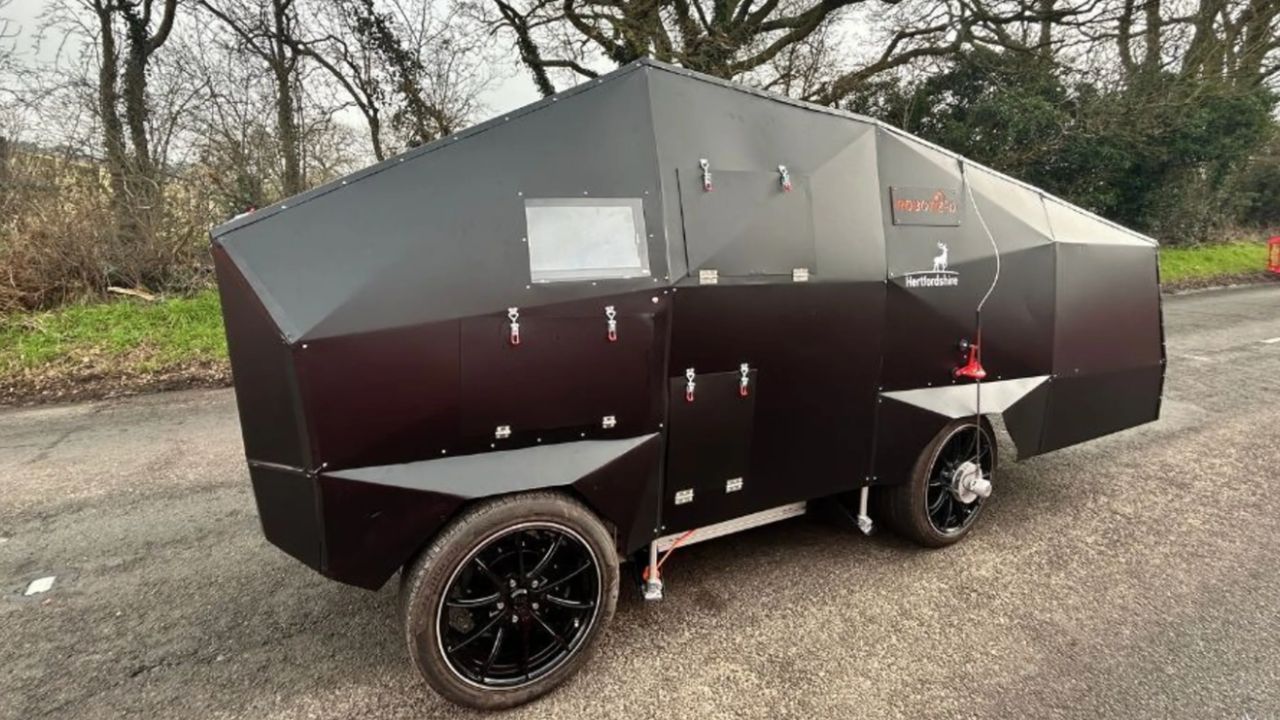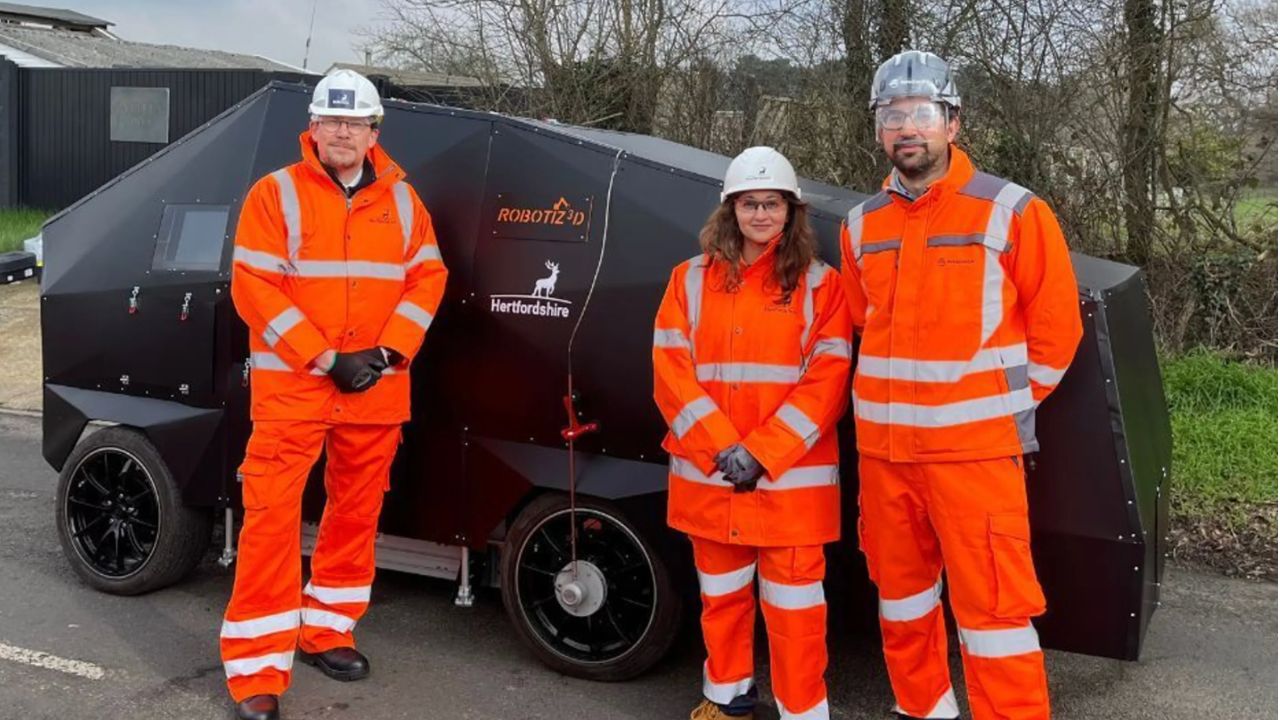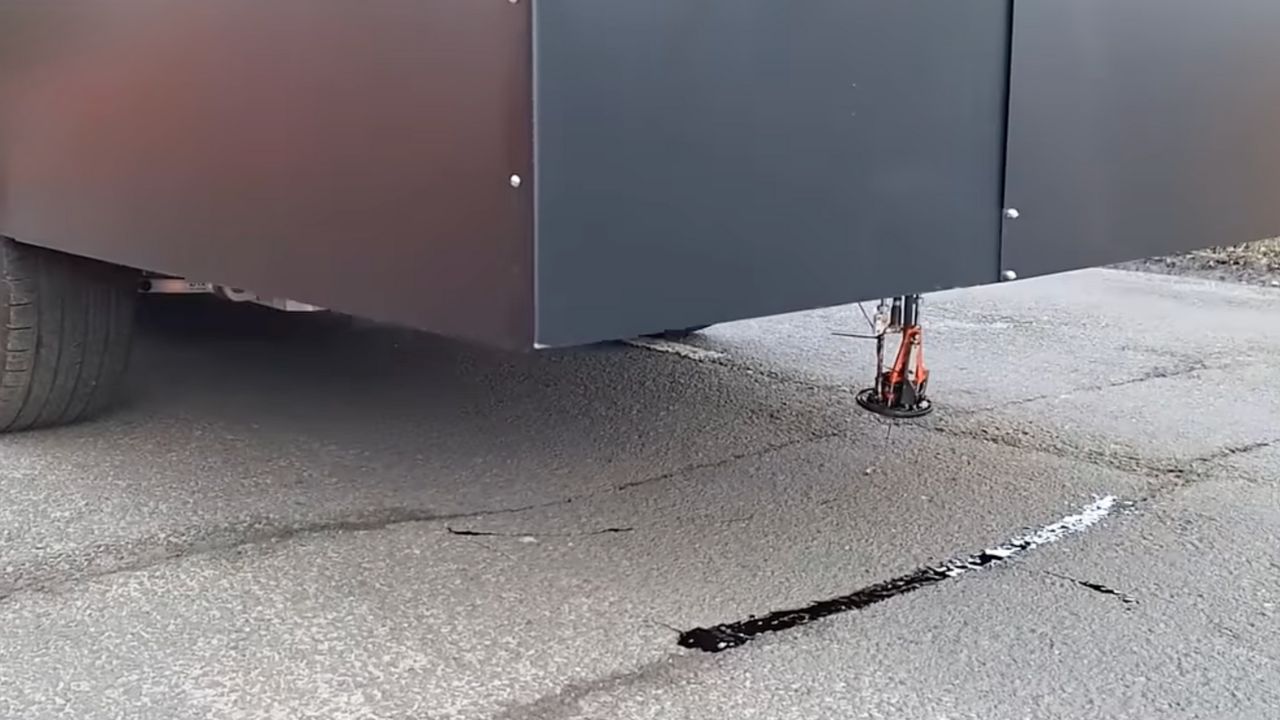Have you ever been in a situation where you’re cruising down the road, enjoying a smooth ride, when suddenly – wham — you hit a pothole? It jolts your car and reminds you of the never-ending battle against these road menaces.
Well, that scenario could be over very soon. Tech firm Robotiz3d is developing three technologies as part of its Autonomous Road Repair System (ARRES).

Credit: Hertfordshire
ARRES Eye: Detecting surface problems
The ARRES Eye technology, a pivotal component of the system, is strategically installed on various vehicles, including buses, trucks, and maintenance vehicles. As these vehicles make their way through city streets and urban environments, they meticulously scan road surfaces for signs of distress.


Credit: Hertfordshire
By leveraging advanced imaging technology, ARRES Eye identifies surface issues such as cracks, potholes, and other damage. It identifies their exact location, assesses their severity, and prioritizes repair tasks. The collected data is logged into a central database for management.

Credit: Robotiz3d
MORE: THIS ROBOT INVENTION CAN DO BACKFLIPS BETTER THAN A GYMNAST
ARRES Prevent: The pothole-preventing robot
ARRES Prevent combines artificial intelligence (AI) and an unmanned robotic vehicle to tackle potholes head-on. The compact electric robo vehicle, approximately the size of a small van, patrols roads day and night. Equipped with autonomous driving capabilities, it navigates streets independently or under remote human guidance.
Currently, a waypoint navigation system guides the vehicle from point A to point B. As an added safety feature, it can be remotely controlled, monitored, or stopped.
When ARRES Prevent detects small cracks in road surfaces, it promptly seals them using innovative materials. By preventing water infiltration, it stops potholes from forming due to rain and frost. Real-time repair data is recorded for quality control, ensuring effective maintenance. Notably, the prototype of this system has successfully completed its inaugural live trial in the UK.
Robotiz3d developed this autonomous robot. The University of Liverpool and Hertfordshire County Council Highways Engineers also collaborated on it.

Credit: Hertfordshire
MORE: THIS HUMANOID ROBOT IS NOW CAPABLE OF FULL CONVERSATIONS
ARRES Ultra: Taking road repair to the next level
As Robotiz3d continues its mission, it’s developing the ARRES Ultra, a robust machine designed for more extensive repairs: The ARRES Ultra will address larger surface cracks and fully grown potholes. Its capabilities include site preparation, precise filling of problem areas, and compacting the repaired surface for a seamless finish. Rigorous testing and refinement will pave the way for full-scale production, promising a revolution in road maintenance.

Credit: Robotiz3d
MORE: AI ROBOT THAT CAN TRIM, EDGE, AND BLOW YOUR LAWN FOR YOU
How the robots promise to save time and money
Potholes impact everyone, whether cyclists or motorists. Traditional maintenance methods are costly, labor-intensive, and outright dangerous for the road crew. But ARRES promises efficiency and cost savings. Nipping potholes in the bud could transform road maintenance across the UK and beyond.

Credit: Hertfordshire
How the pothole robot went from research to reality
The University of Liverpool’s School of Engineering laid the groundwork for ARRES. After four years of dedicated research, a spin-out company, Robotiz3d, emerged in 2020, driven by the vision of AI-driven robotic maintenance. Innovate UK recognized its potential and provided funding in 2021, propelling ARRES from theory to practical application. Since then, other organizations, including Horizon Europe, CERN, the Department For Transport in the UK(DFT), and the CAM UK program, have provided funding.

Credit: Hertfordshire
Kurt’s key takeaways
As ARRES takes its first steps on the roads, we’re witnessing a leap forward in infrastructure management. With this AI-powered robot, potholes may soon become a thing of the past. Robotiz3d says this is a local innovation with global potential. So next time you drive or cycle, remember – behind the scenes, ARRES could soon be silently working to keep our roads smooth and safe for you.
Beyond potholes, what other infrastructure challenges do you think robotic technologies could help solve? Let us know in the comments below.
FOR MORE OF MY TIPS, SUBSCRIBE TO MY FREE CYBERGUY REPORT NEWSLETTER HERE
🛍️ SHOPPING GUIDES:
KIDS | MEN | WOMEN | TEENS | PETS |
FOR THOSE WHO LOVE:
COOKING | COFFEE | TOOLS | TRAVEL | WINE |
DEVICES:
LAPTOPS | TABLETS | PRINTERS | DESKTOPS | MONITORS | EARBUDS | HEADPHONES | KINDLES | SOUNDBARS | KINDLES | DRONES |
ACCESSORIES:
CAR | KITCHEN | LAPTOP | KEYBOARDS | PHONE | TRAVEL | KEEP IT COZY |
PERSONAL GIFTS:
PHOTOBOOKS | DIGITAL PHOTO FRAMES |
SECURITY
ANTIVIRUS | VPN | SECURE EMAIL |
CAN'T GO WRONG WITH THESE:




1 comment
ARRES tech could be used for bridge stress tests, overpasses for pedestrians, apartment decks. Sidewalks, flooring, wall integrity of buildings. The list could go on.